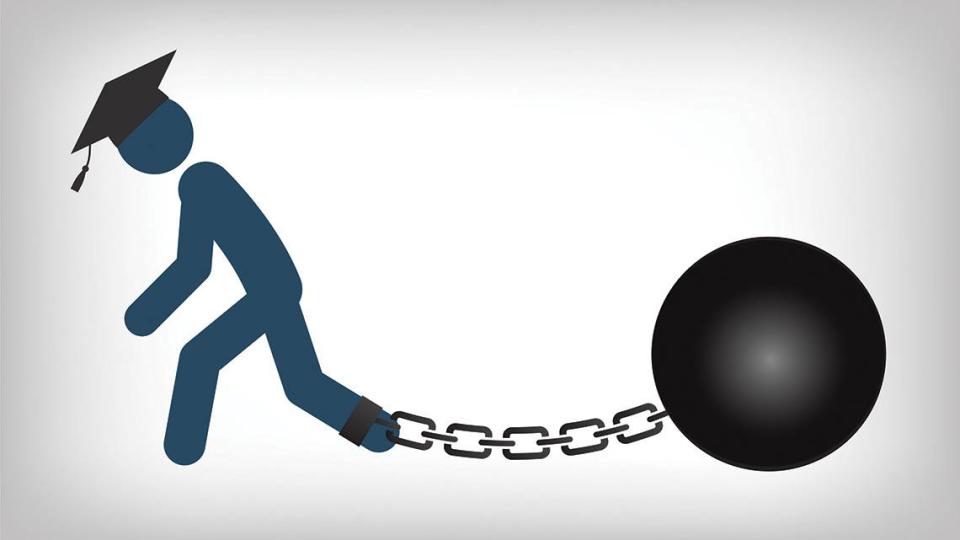There’s a way for students to manage debt more easily and keep taxpayers off the hook | Opinion
Student loans cast a stubborn shadow over debtors, their loved ones and our economy at large. As millions of Americans struggle well into adulthood with inhibitory debt from their education, the attorneys general of Kansas and Missouri are each leading separate lawsuits against the efforts of the Biden-Harris administration to deliver student debt relief.
Even if the Biden-Harris administration is successful in reducing the debt of former students, the root problem persists with current and future students who accept excessive personal loans as a necessary evil to access higher education. The impact of affording college often spreads to families, who may sacrifice growing a business, buying a home or saving for retirement to reduce, if only by a little bit, the debt on their young adults’ shoulders.
As a nation, we are long overdue for a fiscally responsible and universally accessible path for students to emerge from higher education better positioned financially to pursue their personal and professional goals.
I propose that high school graduates attend the college of their choice and that the federal government pay the entire bill at rates negotiated by the U.S. Secretary of Education. This would be similar to the Inflation Reduction Act, which requires the secretary of Health and Human Services to negotiate prices for prescription drugs covered by Medicare. In return for no student debt or asking loved ones to diminish or pause their own financial goals, students who participate in the program would pay incrementally higher federal income taxes until retirement.
By utilizing the federal approach of progressively taxing ordinary income at marginal rates, a pay-it-forward model could equitably sustain this self-funded program, while asking nothing of taxpayers who do not directly benefit. For example, participants would only draw on the program’s funds during their time in school, while past participants would contribute annually only when reaching the 22% marginal tax rate that currently applies to single filers making at least $47,150, and married joint filers making at least $94,300.
The increment dedicated to funding the program would slightly increase for taxpayers moving higher up the tax bracket. Those with a lucrative earnings year would pay a little more toward the program that allowed them to attend their school of choice without financial consideration. Those who make less in a given year would contribute less or possibly nothing. This entirely elective program would be funded only by those who prospered from it, and never by those who don’t have the financial resources to contribute during a lean year.
A 2013 study from Washington University in St. Louis found that children are three times more likely to attend college or post-high school training when informed that money has been set aside for tuition. Just imagine the impact on the outlook of students and families nationwide if longstanding hurdles to affording higher education were considerably lowered.
Taxpayers funding the program could conceivably pay more in income tax between leaving school and retirement than they would have otherwise spent in repaying student loans. However, those taxpayers would know that tuition rates underwent unprecedented scrutiny during negotiations with the HHS secretary and that those they support would, like them, begin their careers without debt attached to their future.
Colleges could direct fewer resources toward financial aid and have more alums who are not weighted down by a future of repaying educational debt.
Build a program that is simple, fair and open to everyone. The worst-case scenario is a generation of educated Americans entering adulthood and the workforce without the burden of student debt. The best-case scenario moves us closer to the country we all deserve.
Peter Gariepy is a certified public accountant serving on the Ladue, Missouri, Schools Board of Education. He lives in Richmond Heights, Missouri.


